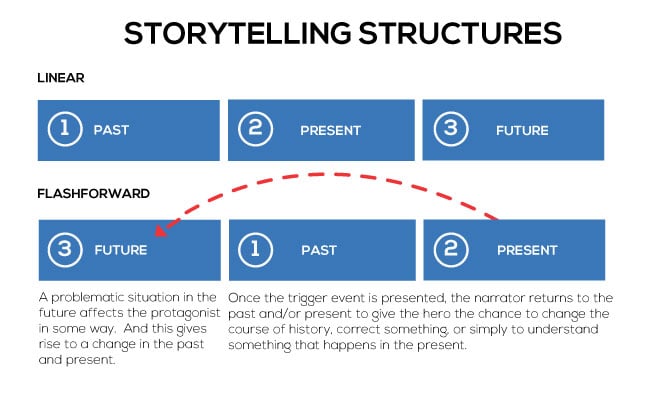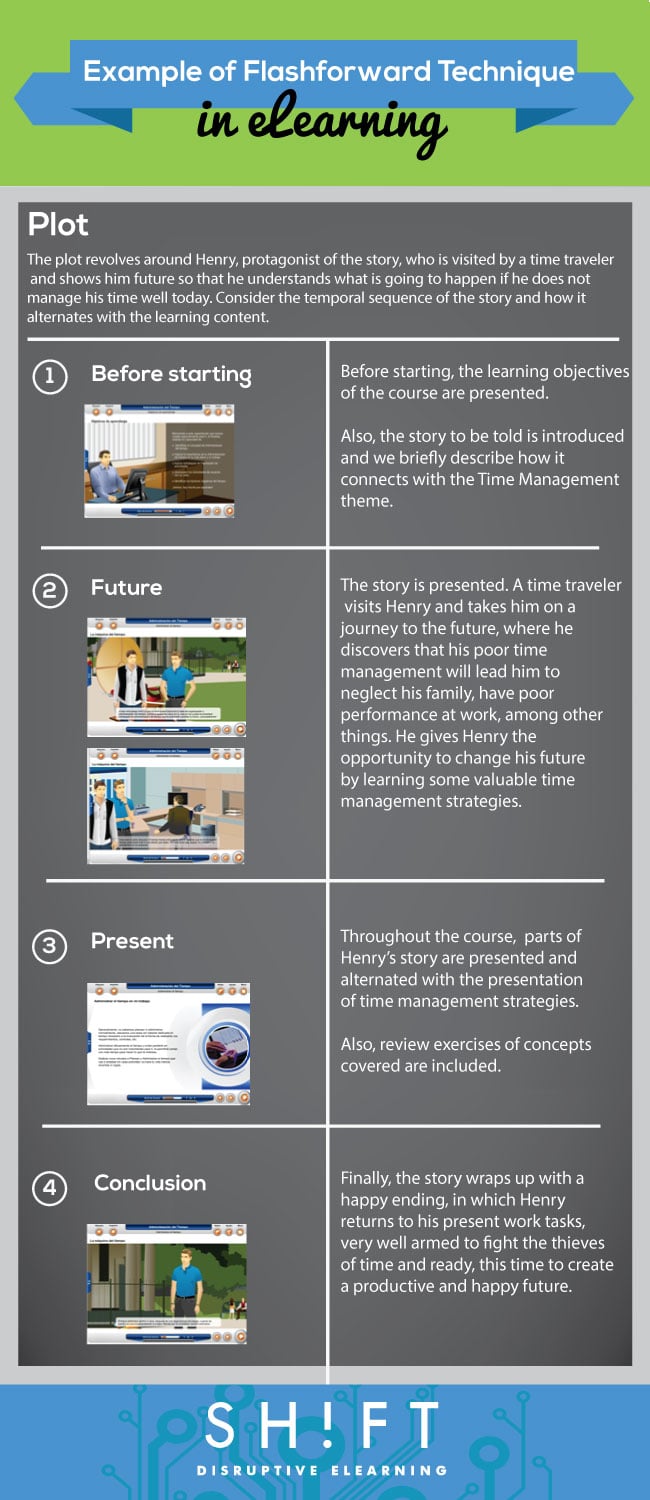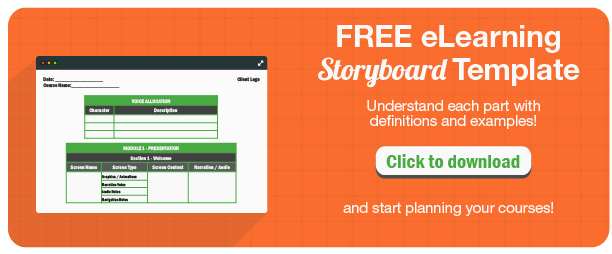Most likely you have seen the movie Terminator starring Arnold Schwarzenegger. If you haven’t, chances are you know what it is about. Whether you love or hate 80’s science fiction, if you develop eLearning courses this movie has something for you. The secret is in how the story is built.
To clearly understand the narrative structure of the story behind the scenes, here is a brief description of the movies’ plot:
The story begins in the year 2029, when machines rule the planet through artificial intelligence called Skynet. John Connor, leader of the human resistance wages a war to regain the freedom of mankind [APC1].
On the verge of losing the war against humanity, Skynet thinks of the idea to eliminate John Connor before he is born, in 1984. To meet this objective, he sends a killing machine (Terminator) through a time machine, where the only mission is to kill the mother of the future leader of the resistance. The resistance group learns of this strategy and sends a human soldier immediately to protect Sarah, the mother of John Connor.
From this point on, the story takes place in the past, in 1984, featuring persecution, suspense, and destruction.

What is the argumentative value of this movie?
This production is built with a narrative structure called "Flashforward." Let's see what its characteristic are.
Flashforward is a cinematographic and literary technique of altering time’s logical sequence "past-present-future,” beginning with the events in the future and then jumping in time to deal with present events. Therefore, the order of events which traditionally is 1-2-3 can become a 1-3-2 or 3-1-2 argument. In other words, it "introduces the end in the beginning" (Cole, 2003).
According to Bordwell (1996), following a chronological order of events, the target audience's attention is focused on the future, creating suspense; however, when using Flashforward technique, we force the audience to evaluate the material corresponding to the future, in light of new information. This way we create curiosity in the learner and we encourage them to analyze and reflect on the chain of events that led to a problem, something that is certainly very educational.

As we saw, in the movie Terminator, the Flashforward technique is used, as the story begins in the future, where machines enslave humanity and control the planet. Then the story takes place in the past or present of the main characters.
How I can apply Flashforward technique in eLearning?
Sometimes when designing eLearning, we rely on the use of storytelling to give a stronger communication and instructional value to the learning content.
Consider the following example applied to instructional design of a self-directed eLearning course. This is a course on Time Management.

Have you imagined that Terminator could help you make more dynamic and didactic eLearning courses? We bet you didn’t!


